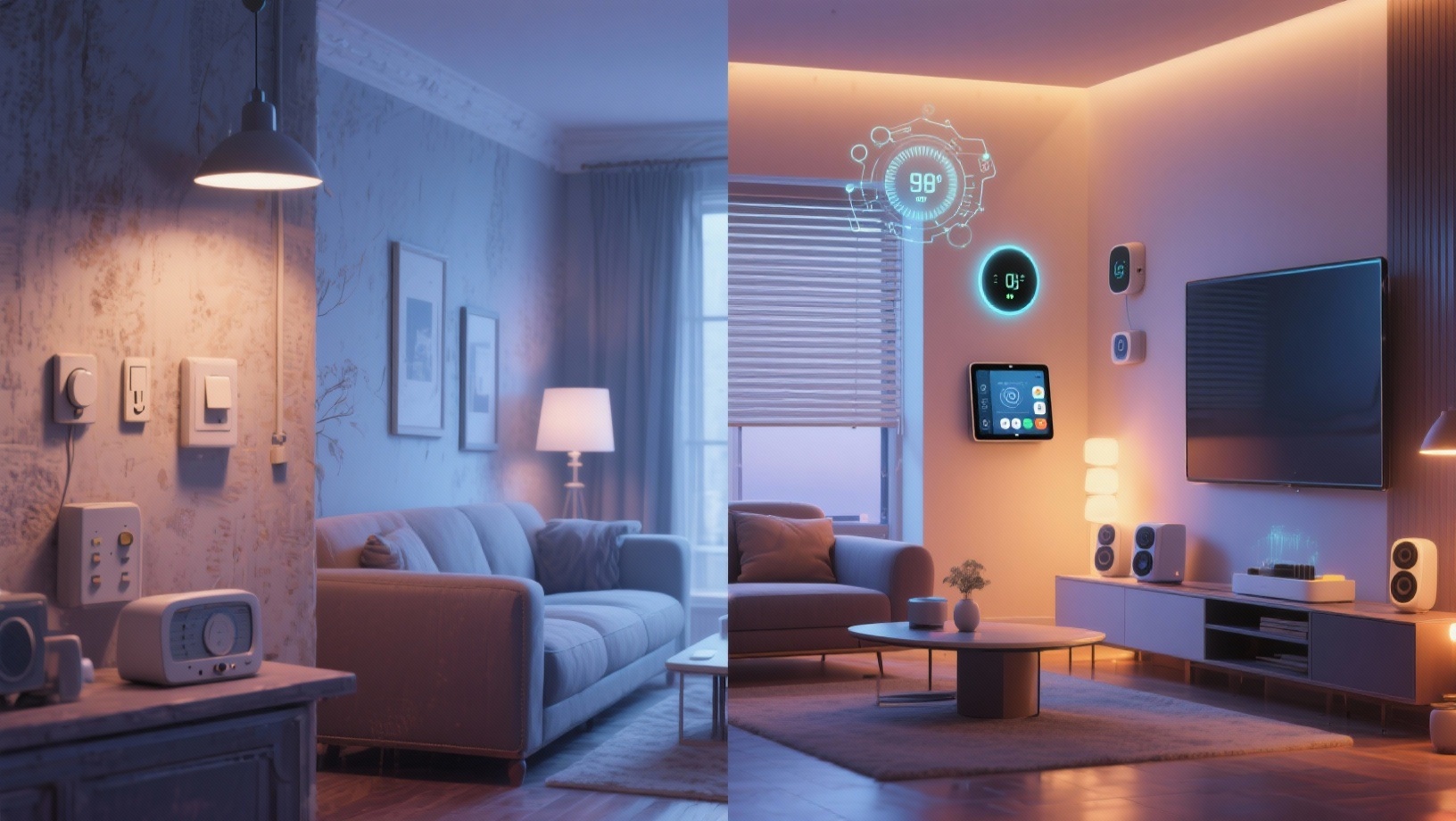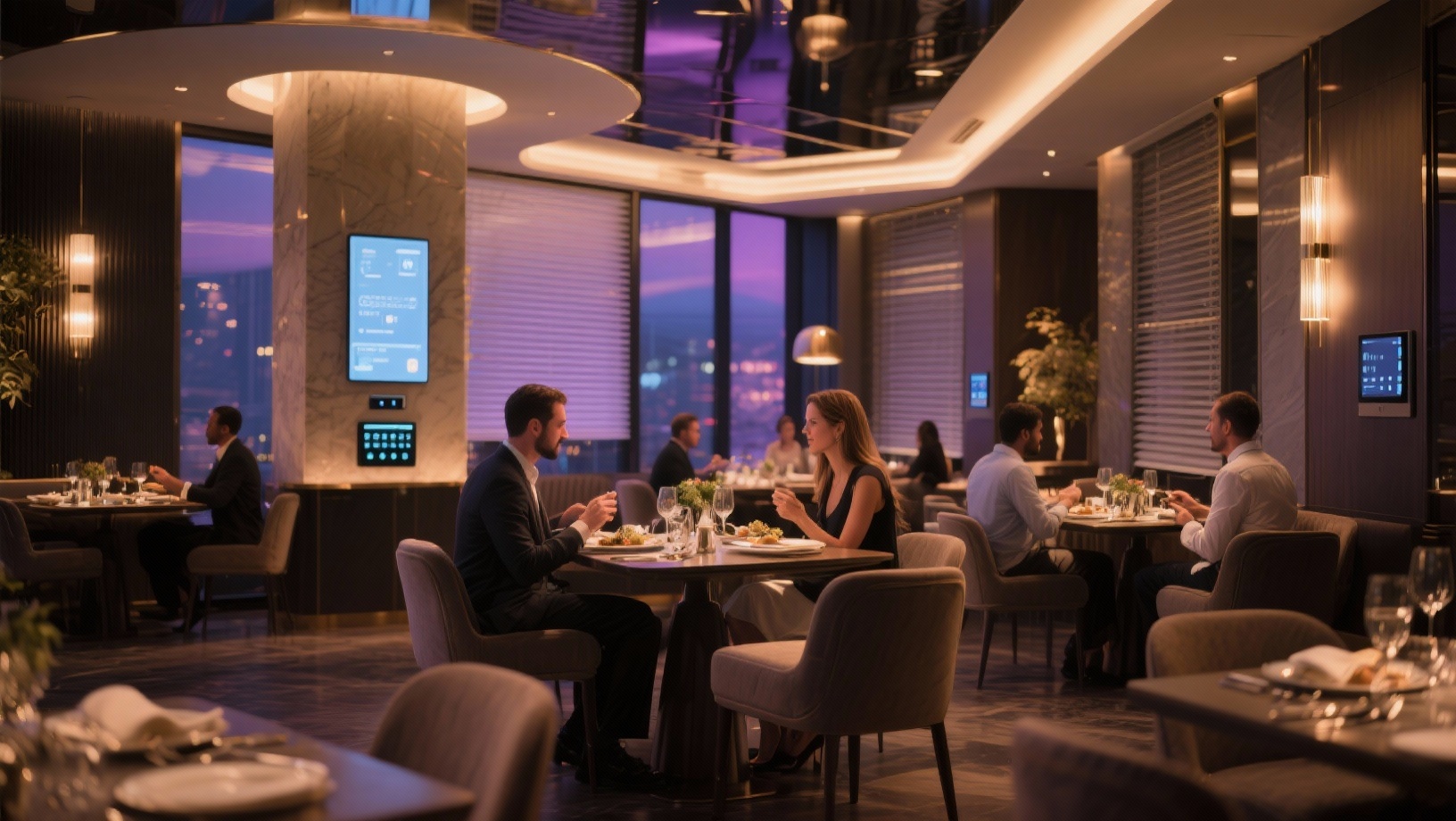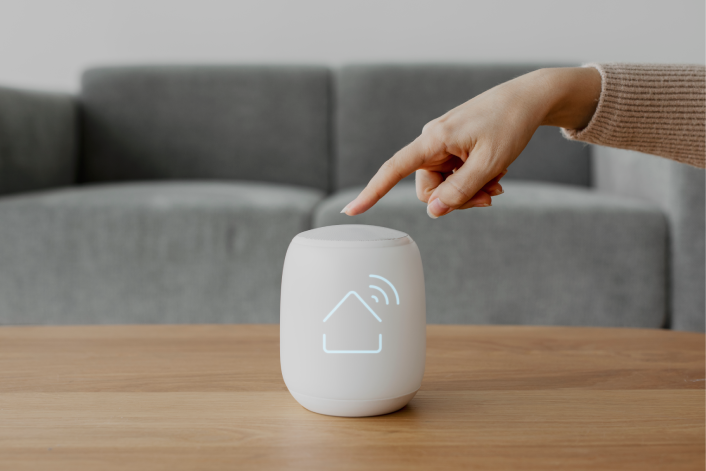
How would you like it if you could dance to the tune of your favourite music, keep up to date with the news and control electrical devices like fans, AC, TVs and more all while sitting in the comfort of your home with just a remote or your voice! This thought is no more an imagination for a large number of people who have chosen a smarter way of life with a home automation system. Once established as a dreamlike concept, smart home automation is accepted by millions today.
To this day, it is seen that there are many house owners who do not dare to switch from traditional to smart home solutions, thinking that the process is complicated or expensive. The thing is, however, that automated solutions today are more available, less expensive, and more convenient than ever. Therefore, we shall identify the differences and realise why a smart home upgrade may be one of the best decisions of your life compared to a traditional home. In this blog, we aim to sort out the confusion and introduce the benefits of smart homes. Let us compare the two!
Traditional Homes: Comfort with Limitations
Let us look at some of the factors
1. Manual Control and Effort
In a traditional home, everything requires manual work. Whether you need to switch off lights, adjust the thermostat, or manage home security, manual control becomes an everyday process. There’s limited integration between devices, and convenience depends entirely on human intervention.
2. Energy Inefficiency
Conventional arrangements are likely to result in energy wastage. The electricity bills can skyrocket because of lights that are kept in vacant rooms, air conditioners that are being overutilised and even those appliances that people had forgotten. Automated regulation is not easy without automated control, which makes control of energy consumption difficult.
3. Limited Security
Security in a normal home is normally the use of the mechanical locks or separate alarm systems. These approaches are simple protection features that do not provide real-time monitoring or remote control capabilities that are common in smart home systems today.
4. Minimal Customization
Conventional homes are functional but static. Lighting, climate, and entertainment systems operate independently without customisation. There’s no centralised control or ability to create “modes” like “Movie Night” or “Good Morning”.
Innovative Homes: Smarter Living with Home Automation Systems
Now that we have established the limitations of traditional homes, let us talk about the benefits a smartly automated home system offers.
Flawless Interconnectivity with Smart Homes.
A smart home system allows most of the gadgets to be connected with each other on one system, such as lights and thermostats, security cameras, and appliances. It can be managed by homeowners with the assistance of smartphones, tablets, or voice assistants, including Alexa or Google Home, via Wi-Fi, Zigbee, or Z-Wave technology.
Imagine that you tell Google, “I am home,” and your lights get on, your thermostat switches get on, and your playlist gets on—all done automatically. This is the relief that smart home automation has brought into lives today.
1. Smart Switches
Among the first, but the most effective, upgrades are smart switches. They replace the old-fashioned wall switches and enable you to operate the lighting and appliances without physically being there. The smart switches are also programmable to control the timing as well as the dimming, which makes energy control simple and efficient.
To give an example, you can have your bedroom lights dim down at bedtime or have your outside lights automatically switch on at sunset.
2. Energy Conservation and Cost Saving.
Smart homes are environmentally friendly. Smart lights, smart motion sensors and smart thermostats are automated to control the utilisation of energy based on the occupancy and temperaments. This, in the long run, is converted into power bill savings that can be achieved to a significant extent and, in some cases, to an extent of 30%.
3. Improved Safety and Peace of Mind
Smart locks, motion cameras and more are examples of new smart home solutions which make the house fully safe. You are able to get real-time notifications, view live video cameras, and can even remotely lock your doors – just in case you are travelling or in the office.
4. Personalized Comfort and Entertainment
Automation is not merely about having control but it is about customising. Control the optimal temperature and lights to match the moods or have your entertainment systems linked to create immersion. Smart homes are custom-made to your patterns and these provide unmatched comfort.
|
Feature |
Traditional House |
Smart Home |
|
Control System |
Manual control of appliances and devices. |
Automated and remote control via smartphone or voice assistant (Alexa, Google Home, etc.). |
|
Energy Efficiency |
Higher energy consumption due to lack of automation and monitoring. |
Smart sensors optimise energy use — lights, fans, and HVAC adjust automatically. |
|
Security |
Basic locks and manual monitoring. |
Advanced smart locks, CCTV, video doorbells, motion sensors, and real-time alerts. |
|
Lighting |
Standard switches and fixed brightness levels. |
Smart lighting allows dimming, scheduling, and mood-based colour control. |
|
Appliance Management |
Appliances work independently. |
Integrated smart systems control multiple devices together for convenience. |
|
Comfort & Convenience |
Dependent on manual effort; limited customisation. |
Enhanced comfort — temperature, lighting, and ambiance can be automated or customised. |
|
Connectivity |
Limited to wired connections. |
IoT-enabled — all devices communicate through Wi-Fi or Bluetooth. |
|
Maintenance |
Reactive — issues detected only after failure. |
Predictive maintenance—smart systems alert users before problems occur. |
|
Cost |
Lower initial cost, but higher operational cost over time. |
Higher upfront investment, but long-term savings on energy and maintenance. |
|
Resale Value |
Standard resale potential. |
Higher resale value due to modern technology integration. |
|
Accessibility |
Limited for the elderly or differently abled. |
Voice and remote control features enhance accessibility and ease of use. |
|
Home Monitoring |
Manual inspection required. |
Remote monitoring through mobile apps anytime, anywhere. |
|
Sustainability |
Less focus on eco-friendly operation. |
Smart energy management promotes sustainability and reduces carbon footprint. |
|
Customization |
Requires manual installation or renovation for upgrades. |
Highly flexible — devices can be added or updated easily. |
Misconceptions about Smart Homes.
Smart home automation is still thought of by many as a dystopian, very expensive, and complex concept. The fact is, it is cheaper and more flexible than ever. Smart plugs or smart switches and other entry-level intelligent devices do not require significant renovations to jumpstart your automation journey.
The vast majority of smart home platforms are designed to be modular; that is, you can begin small by adding lighting control today, security tomorrow, and complete climate control in the future.
Benefits of Smart Home Solutions.
- Efficiency: Electronic devices collaborate to reduce waste and maximise performance.
- Security: The real-time monitoring will provide peace of mind.
- Time Saving: Process automation with ease.
- Sustainability: The energy-saving properties of this product contribute to eco- friendly living.
- Value of Property: Smart improvement is a great plus in value improvement in terms of resale value.
Transitioning From a Traditional House to a Smart Home
Planning to switch from traditional to smart homes? You can start with the following:
- Start Small – Find smart switches or smart plugs.
- Compatibility – Select a compatibility system to work with your favourite smart system.
- Gradual Upgrade - Advance to lighting systems, thermostats and smart security.
- Secure Your Network – Change your passwords and software patches.
- Customise Routines – Design your own automation routines, using your lifestyle.
The Future of Smart Homes
The future of smart home automation is predictive intelligence – smart homes that learn to adjust according to your behaviour and will adjust automatically. Imagine you have your lights dimmed as you sit and have just started watching a movie or your air conditioning turned on right before you get home. The concept of comfort and sustainability will be given a different meaning in smart homes of the next generation, as AI and IoT are now being advanced.
Final Words: A Smarter Tomorrow Starts Now
The argument between the smart homes and the traditional has travelled far beyond the parameters of luxury. You need to start with small steps in case you have been hesitant in switching from traditional to modern homes. Put in smart switches, play with automation, and see how easily your life will change. This is the age of intelligent living and it is time your home becomes a part of this revolution.


